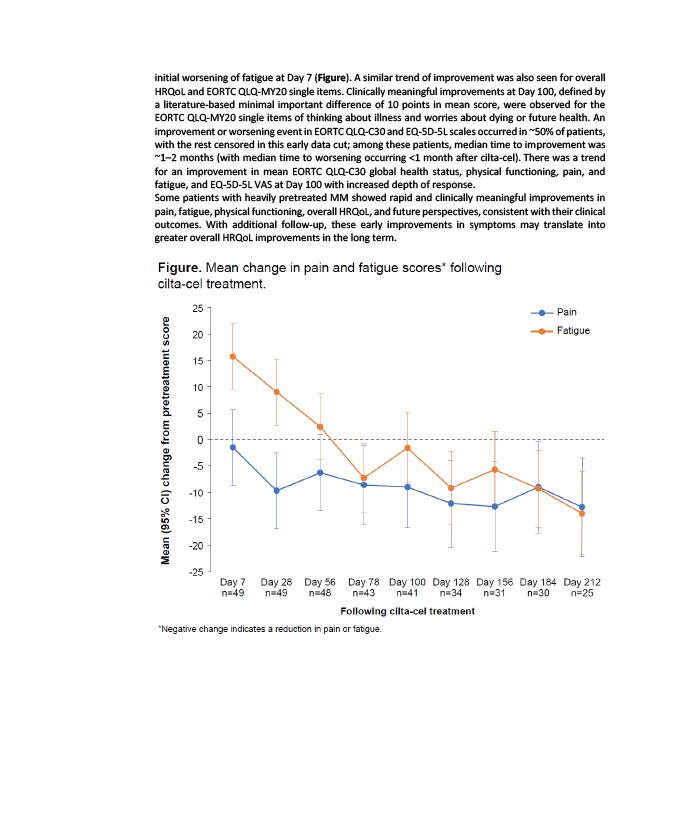
initial worsening of fatigue at Day 7 (Figure). A similar trend of improvement was also seen for overall
HRQoL and EORTC QLQ-MY20 single items. Clinically meaningful improvements at Day 100, defined by
a literature-based minimal important difference of 10 points in mean score, were observed for the
EORTC QLQ-MY20 single items of thinking about illness and worries about dying or future health. An
improvement or worsening event in EORTC QLQ-C30 and EQ-5D-5L scales occurred in ~50% of patients,
with the rest censored in this early data cut; among these patients, median time to improvement was
~1–2 months (with median time to worsening occurring <1 month after cilta-cel). There was a trend
for an improvement in mean EORTC QLQ-C30 global health status, physical functioning, pain, and
fatigue, and EQ-5D-5L VAS at Day 100 with increased depth of response.
Some patients with heavily pretreated MM showed rapid and clinically meaningful improvements in
pain, fatigue, physical functioning, overall HRQoL, and future perspectives, consistent with their clinical
outcomes. With additional follow-up, these early improvements in symptoms may translate into
greater overall HRQoL improvements in the long term.